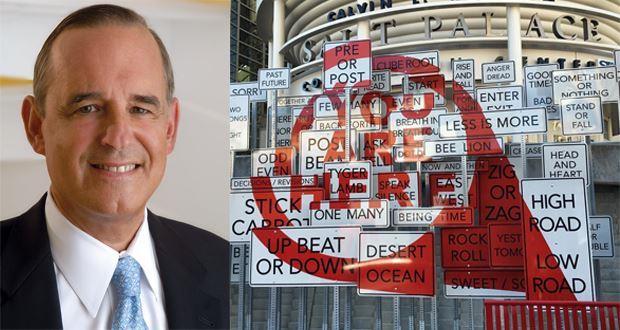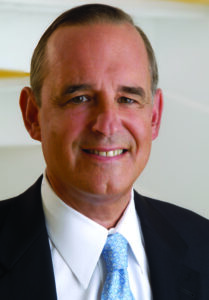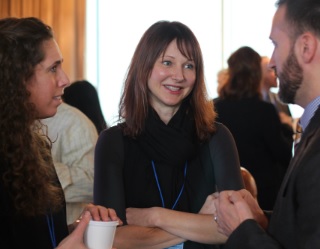From the Corner Office: John Graham, ASAE

In an exclusive interview with ASAE President John Graham earlier this month, we learned that while mobile is a game changer and video is the new frontier, print media and live events continue to resonate with members of all ages and inclusiveness is the key to success.
![]()
Look at innovation through two lenses—basic process improvement and big blue sky breakthroughs. You need to have both. ![]()
All-size organizations must have ways for members, constituents and potential members to engage with them on their own terms. ![]()
Mobile continues to be the game changer, but the new frontier is video. ![]()
Older professionals can (and should) learn from younger people in the workforce—and vice versa. ![]()
Association Adviser: Having two NASA astronauts as opening keynote speakers for the recent ASAE annual conference was an intriguing choice. What do you think impressed attendees the most about their talk?

John Graham: For me, the main takeaways I got from the Kelly brothers’ presentation was this: just because you are not good at something initially, doesn’t mean you can’t get good at it and improve. The second thing is that you should simply focus on what you can control.
AA: We’ve heard a tremendous emphasis on innovation and the need to create breakthrough products, service and business models. Can you ever have too much innovation and run the risk of not having the bandwidth to sustain it?
JG: Look at innovation through two lenses. The first lens is the discipline of examining something, evaluating it and making adjustments as needed. Some of those adjustments may not be sexy. It may not be rocket science, but it is improvement and that’s one form of innovation. The other form of innovation is more difficult — that’s the Blue Sky, Blue Ocean type. How do you develop a discipline around creating new ideas? We use a process at ASAE called Design Thinking that came out of Darden Business School at University of Virginia.
AA: We’ve been talking a lot about the “new normal” this week, what can associations do to better serve the “what’s in it for me?” membership mindset?
JG: “At the end of the day you need to maintain your relevance to members. There are a number of ways to do that. We are moving into an engagement model. It means people engage on a continuum of activity. No matter how large or small your organization is, you need to have ways for customers, constituents and potential members — not just active members — to engage with you on the [individual] level they find most valuable. It’s based on what the individual wants. They may not know everything you have on your menu. The trick is to make it easy for them to peruse your menu, but don’t penalize them if they only order the entrée or only order the appetizer.
AA: Based on attendance here in Salt Lake City, live events are alive and well. What are some of the other “legacy” communication channels (i.e. print, directories, newsletters) that will continue to be part of the association communication mix?
JG: As you know, some associations have done away with print. We don’t have any plans to do that. Print has taken an advertising hit over the last 10 years, which was exacerbated by the recession. But I also find it interesting that print is not going away. I talk a lot to our colleagues at Naylor and we’re finding that some associations that got out of print and went straight to digital —especially at the state and local level — are now coming back to print. We used to take everything that was in print and put it online, but as I can see from your current issue [of Association Adviser], the reverse is happening — we’re putting the best of online content into print form. It really is a matter of providing a variety of products and services. Advertisers value that [variety] and value that exposure. Some advertisers just don’t think online works as well.
AA: Some association leaders have told us that they’re going back to direct mail, postcards, even faxing to cut through the communication clutter. What’s your take?
 JG: Actually, most faxes are coming through as emails. I have found that specific promotions are very effective if done as first class mail. I’m not talking about direct bulk mail, but targeted first class mailings about [an association’s] special events, activities and promotions.
JG: Actually, most faxes are coming through as emails. I have found that specific promotions are very effective if done as first class mail. I’m not talking about direct bulk mail, but targeted first class mailings about [an association’s] special events, activities and promotions.
AA: The first time we talked was at the ASAE annual meeting in Los Angeles in 2010. What are some of the most important changes you’ve seen across the association landscape since that day half a dozen years ago?
JG: Mobile continues to be the game changer, but I think the new frontier is video. It’s going to continue to become more and more prevalent.
AA: Our research shows mixed reviews for video. It’s very effective and engaging when done well, but it can be very off-putting and irritating for members when not done well.
JG: I’m not sure that’s the case. I think it depends on what you’re using it for. If you’re in the social media/YouTube space, unpolished, but genuine raw video footage is in many ways more attractive and more sincere than what’s highly produced.
AA: Is there an ideal length for videos?
JG: It depends on what you’re using it for. If it’s a webinar, than 45 to 60 minutes works. You’re distributing deep content. If you’re trying to market a message, then 30 seconds to a minute is about right.
 AA: Millennials get the lion’s share of attention from membership directors. What can associations do to better serve mid-career and late career members?
AA: Millennials get the lion’s share of attention from membership directors. What can associations do to better serve mid-career and late career members?
JG: Ideally what we want to be is the Go-To resource for all association people regardless of what stage they are in their careers. If you’re a senior level person, it might be helping you think about the right path to retiring. If you’re mid-career, it might be the right path to a C-Suite job. For junior level people, they may not know how to develop the skills, competencies and attributes that are going to be important for them going forward in their career journeys.
AA: A very well-attended session at ASAE’s recent annual conference focused on switching lanes and exit ramps for longstanding association professionals. Will we be seeing more sessions like that in the future?
JG: Having workers retire out is one of the features that causes productivity to decline. Someone who’s been doing the same job for 30 years is going to do it faster and more efficiently than someone who’s been doing it for five years. There’s a huge knowledge gap. A lot of people believe the “secret sauce” is to give Boomers the opportunity to gracefully and slowly exit and to train the millennials moving up. That’s the fastest growing segment of the workforce.
AA: Can older generations learn from millennial executives who are starting to assume leadership roles? Is the notion of reverse mentoring on the rise?
JG: think that everybody can learn from everyone else. I think younger people can learn from older people’s experiences. I think the older generation can learn from younger people, particularly their skill sets when it comes to social media and how they engage with each other. I’ve been hearing about reverse mentoring and I think it’s important to have diversity and inclusion in the workplace. Exposure to different ages, genders and lifestyles will add to the development of any individual, whether you’re a senior person or a junior person. Ultimately, that’s good for all of us.

